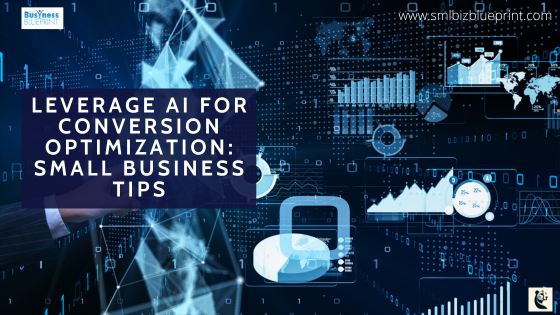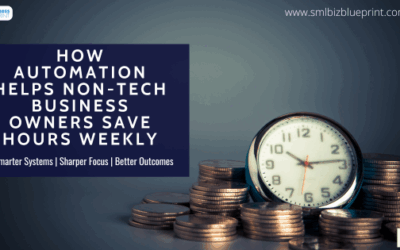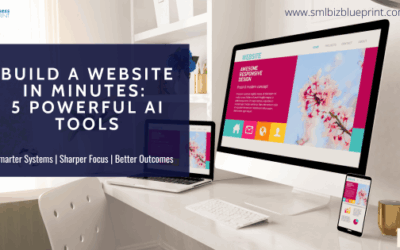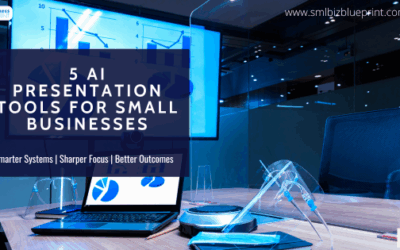In today’s competitive market, small businesses constantly seek innovative ways to improve their conversion rates and optimise their marketing strategies.
One of the most powerful tools available is Artificial Intelligence (AI). By leveraging AI, small businesses can gain deeper insights into customer behaviour, personalise user experiences, and automate key processes, ultimately boosting conversion rates and driving growth.
This blog post will guide you through using AI to enhance conversion optimisation. We’ll cover everything from identifying key conversion metrics and choosing the right AI tools to implementing AI-driven personalisation and overcoming common challenges.
By the end of this article, you’ll have a clear understanding of how to harness the power of AI to improve your conversion optimisation results and analysis, positioning your small business for success in the digital age.

#1 Introduction to AI for Conversion Optimization
Understanding the Basics of AI in Marketing
Artificial Intelligence (AI) is revolutionising how businesses approach marketing and conversion optimisation. At its core, AI involves the simulation of human intelligence in machines, enabling them to think, learn, and perform tasks traditionally requiring human intervention.
For small businesses, AI provides an opportunity to automate processes, gain valuable insights, and enhance user experiences in previously unimaginable ways.
AI’s relevance in marketing lies in its ability to analyse vast amounts of data quickly and accurately. This capability allows businesses to understand customer behaviours and preferences, predict future trends, and make data-driven decisions.
By incorporating AI into their marketing strategies, small businesses can improve efficiency, reduce costs, and increase conversion rates.
The Importance of Conversion Rate Optimization
Conversion Rate Optimization (CRO) is a critical aspect of any marketing strategy. It involves improving the percentage of website visitors who complete desired actions, such as purchasing, signing up for a newsletter, or filling out a contact form.
Effective CRO leads to increased revenue, better user experiences, and higher customer satisfaction.
AI plays a pivotal role in enhancing CRO efforts. By leveraging AI, businesses can gain deeper insights into user behaviour, identify patterns, and predict which actions will most likely lead to conversions.
For instance, AI algorithms can analyse user interactions on a website to determine which elements are driving conversions and which are causing drop-offs. This analysis enables businesses to make informed adjustments to their websites and marketing campaigns, resulting in higher conversion rates.
By understanding the basics of AI and recognizing the importance of CRO, small businesses can begin harnessing AI’s power to optimise their marketing efforts and achieve better results.
The next sections will explore practical steps and strategies for implementing AI in your small business to enhance conversion optimisation and analysis.
#2 First Steps to Implement AI for Small Business Conversion Optimization
Identifying Key Conversion Metrics with AI
The foundation of effective conversion rate optimisation (CRO) begins with identifying and understanding key conversion metrics. These metrics provide insights into user behaviour and highlight areas for improvement.
Common conversion metrics include:
- Bounce Rate: The percentage of visitors who leave your website after viewing only one page. A high bounce rate may indicate your landing page is not engaging or relevant to your visitors.
- Click-Through Rate (CTR): The ratio of users who click on a specific link to the number of total users who view a page, email, or advertisement. A higher CTR indicates that your content is compelling and relevant.
- Conversion Rate: The percentage of visitors who complete a desired action, such as purchasing or signing up for a newsletter. This is the most critical metric for measuring the effectiveness of your CRO efforts.
- Average Session Duration: The average length of time that visitors spend on your website. Longer sessions typically indicate higher engagement levels.
AI tools can significantly enhance the analysis of these metrics. By leveraging AI, small businesses can track and analyze these metrics in real-time, providing deeper insights and more accurate predictions.
For example, AI can identify patterns and trends that might not be immediately apparent through manual analysis. This allows businesses to pinpoint the exact factors driving conversions or causing drop-offs.
Choosing the Right AI Tools for Small Businesses
Selecting the right AI tools is crucial for small businesses looking to implement AI for conversion optimisation. With numerous options available, choosing tools that align with your specific needs and goals is important.
Here are some popular AI tools that are particularly effective for small businesses:
- Google Analytics: An essential tool for tracking website performance and user behaviour. Its AI-powered insights can help identify trends and opportunities for optimisation.
- Hotjar: Provides heatmaps and session recordings to visualise how users interact with your website. AI-driven analysis helps uncover areas for improvement.
- Crazy Egg: Offers heatmaps, scrollmaps, and user recordings. Its AI capabilities help analyse user behaviour and optimise site layout.
- Optimizely: A leading platform for A/B testing and multivariate testing. AI features automate the testing process, allowing faster and more accurate results.
- VWO (Visual Website Optimizer): Another powerful tool for A/B testing and CRO. AI-driven features help identify the best-performing variations and optimise user experiences.
When choosing AI tools, consider the following criteria:
- Ease of Use: Ensure the tool is user-friendly and does not require extensive technical expertise.
- Integration Capabilities: The tool should integrate seamlessly with your existing marketing and analytics platforms.
- Cost-Effectiveness: Look for tools that offer a good balance of features and affordability.
- Many AI tools offer tiered pricing plans for different business sizes and budgets.
- Scalability: Choose tools that can grow with your business and handle increased data and traffic as your business expands.
Small businesses can lay a solid foundation for successful AI-driven conversion optimisation by identifying key conversion metrics and selecting the right AI tools.
In the following sections, we’ll explore specific strategies and examples of how AI can enhance user experience, automate A/B testing, and overcome common challenges.
#3 Enhancing User Experience with AI-Driven Personalization
Personalisation Techniques Powered by AI
Personalisation has become a key driver of user engagement and conversion rates in digital marketing. AI-driven personalisation enables businesses to deliver tailored experiences to each visitor based on their behaviours, preferences, and interactions.
Here are some effective AI-powered personalisation techniques:
- Product Recommendations: AI algorithms analyse user data to suggest products most likely to appeal to individual customers. Amazon famously uses this technique to boost sales and customer satisfaction.
- Dynamic Content: AI allows businesses to change website content dynamically based on user data. For example, a returning visitor might see personalised greetings, offers, or content that reflects their previous interactions with the site. This creates a more engaging and relevant user experience.
- Tailored Marketing Messages: AI can personalise email campaigns and advertisements to address individual preferences and behaviours. It can segment audiences and craft messages that resonate more deeply with each segment, leading to higher open and click-through rates.
Benefits of AI-Driven Personalization
Improved User Engagement: Personalized experiences make users feel valued and understood, leading to higher engagement and longer session durations.
Higher Conversion Rates: Tailoring content and offers to individual preferences increases the likelihood of conversions.
Increased Customer Loyalty: Personalized interactions build stronger customer relationships, fostering loyalty and repeat business.
By leveraging AI-driven personalisation, small businesses can create more relevant and engaging user experiences that drive conversions and foster customer loyalty.
The next section will explore how machine learning can further predict customer behaviour to enhance conversion optimisation efforts.
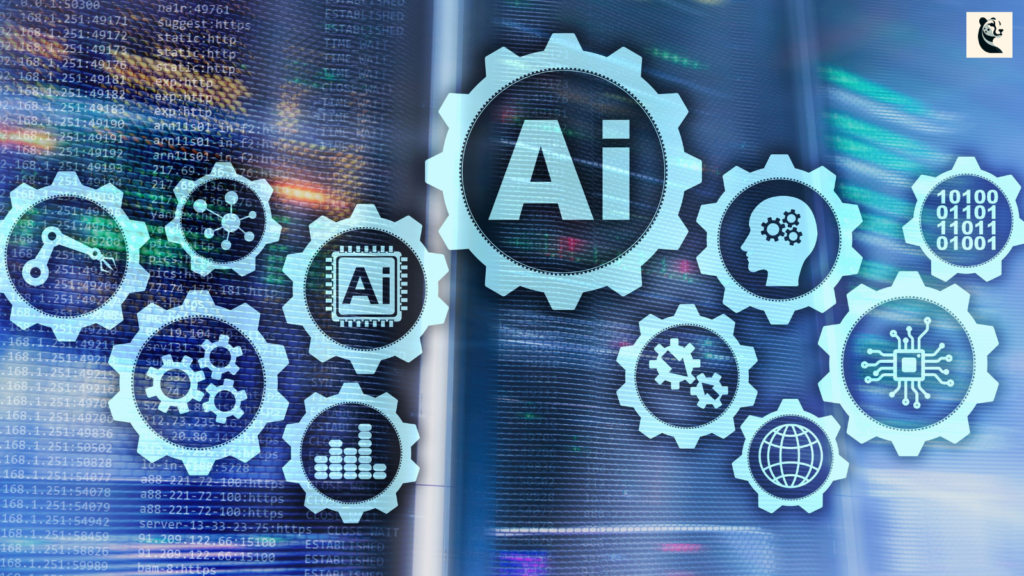
#4 Utilizing Machine Learning to Predict Customer Behavior
How Machine Learning Improves Conversion Rates
Machine learning (ML), a subset of AI, focuses on developing algorithms that allow computers to learn from and make data-based decisions. This technology is potent for small businesses looking to predict customer behaviour and enhance conversion rates.
Here’s how machine learning can significantly impact conversion optimisation:
Behavioural Analysis: Machine learning algorithms analyse vast amounts of data to identify patterns and trends in customer behaviour. By understanding how different segments of customers interact with your website, businesses can tailor their marketing strategies to meet specific needs and preferences.
Predictive Analytics: Machine learning models can forecast future customer actions based on historical data. This allows businesses to anticipate customer needs, personalise marketing efforts, and offer targeted promotions that are more likely to result in conversions.
Real-Time Adaptation: Machine learning enables real-time adjustments to marketing strategies and website content based on ongoing user interactions. For instance, if a particular product is trending, the system can automatically highlight it on the homepage, increasing the chances of conversion.
Practical Examples of Machine Learning in Action
Machine learning is not just theoretical; many businesses have successfully implemented ML strategies to boost their conversion rates.
Here are some practical examples:
Example 1: Predictive Analytics for E-Commerce: An online retailer uses machine learning to predict which products each customer is likely to purchase next. The ML algorithm creates personalised product recommendations by analysing past purchase data and browsing history.
Example 2: Dynamic Pricing Models: A travel company leverages machine learning to implement dynamic pricing. The algorithm adjusts real-time prices based on demand, customer browsing patterns, and competitor pricing. This strategy maximises revenue and attracts price-sensitive customers at the optimal time, increasing the overall conversion rate.
Benefits of Machine Learning for Conversion Optimization
Enhanced Personalization: Machine learning enables deeper personalisation by predicting individual customer preferences and tailoring experiences accordingly.
Increased Efficiency: Automating data analysis and decision-making processes frees up valuable time for marketing teams, allowing them to focus on strategy and creativity.
Improved Accuracy: Machine learning models continuously learn and improve, leading to more accurate predictions and better-targeted marketing efforts.
Implementing Machine Learning in Your Small Business
To effectively utilise machine learning for conversion optimisation, small businesses should follow these steps:
- Data Collection: Gather comprehensive data on customer interactions, including website behaviour, purchase history, and engagement metrics.
- Select the Right Tools: Choose machine learning tools and platforms that align with your business needs and technical capabilities. Tools like Google Cloud AI, Amazon SageMaker, and IBM Watson offer robust machine-learning solutions for businesses of all sizes.
- Build and Train Models: Work with data scientists or use user-friendly platforms to build and train machine learning models. Ensure these models are regularly updated with new data to maintain accuracy.
- Integrate and Test: Integrate machine learning models into your marketing and analytics systems. Test the models in a controlled environment before full deployment to ensure they perform as expected.
- Monitor and Optimize: Continuously monitor the performance of your machine learning models and optimise them based on real-world results. Use feedback loops to improve model accuracy and effectiveness over time.
By leveraging machine learning, small businesses can gain a competitive edge in conversion optimisation, driving higher engagement and sales.
In the next section, we’ll explore the benefits of automating A/B testing with AI to enhance your conversion strategies further.
#5 Automating A/B Testing with AI
Benefits of AI in A/B Testing
A/B testing is fundamental for optimising web pages, marketing campaigns, and user experiences. It involves comparing two versions (A and B) to determine which performs better.
However, traditional A/B testing can be time-consuming and limited in scope.
AI revolutionises this process by automating and enhancing A/B testing in several key ways:
- Increased Efficiency: AI can automate the setup, execution, and analysis of A/B tests, significantly reducing the time and effort required. This allows businesses to run more tests in less time, leading to quicker insights and faster implementation of improvements.
- Enhanced Accuracy: AI algorithms can analyse vast amounts of data more accurately than manual methods, identifying subtle patterns and correlations that human analysts might miss. This leads to more reliable results and better decision-making.
- Multivariate Testing: Unlike traditional A/B testing, which compares only two versions, AI can handle multivariate testing, evaluating multiple variables simultaneously. This provides a more comprehensive understanding of how different elements interact and impact performance.
- Real-Time Adaptation: AI can adjust and optimise tests in real-time based on incoming data, allowing for dynamic modifications and immediate improvements. This agility ensures that the best-performing variations are quickly identified and implemented.
Tools and Techniques for Effective AI-Driven Testing
To leverage the benefits of AI in A/B testing, small businesses should consider using advanced tools and adopting best practices for implementation.
Here are some recommended AI tools and techniques:
AI Tools for A/B Testing:
- Optimizely: A leading platform for A/B testing and experimentation, Optimizely uses AI to automate tests and provide actionable insights. Its advanced capabilities include multivariate testing and personalised experiences.
- Adobe Target: Part of the Adobe Experience Cloud, Adobe Target offers AI-powered A/B testing and personalisation features. It helps businesses deliver optimised experiences across web and mobile platforms.
- Convert Experiences: This tool provides AI-driven A/B testing, personalisation, and behavioural targeting. It is known for its user-friendly interface and powerful testing capabilities.
Best Practices for Implementing AI-Driven Tests:
Set Clear Objectives: Before starting, define the goals of your A/B tests. Whether you’re increasing conversion rates, improving user engagement, or boosting sales, having clear objectives ensures that your tests are focused and effective.
Ensure Adequate Sample Size: A sufficient sample size is crucial for accurate results. AI tools can help determine the optimal sample size for reliable statistical significance.
Monitor Test Progress: Even with AI automation, monitoring your tests’ progress regularly is important. Ensure that the AI algorithms function as expected and make necessary adjustments.
Iterate and Learn: Use the insights gained from A/B testing to refine and improve your strategies continuously. AI can help identify new testing opportunities and guide ongoing optimisation efforts.
Examples
Example 1: A small e-commerce company used AI-powered A/B testing to optimise its checkout process. By testing different layouts, call-to-action buttons, and form fields, they identified the most effective combination.
Example 2: A SaaS provider implemented AI-driven multivariate testing to improve their landing page performance. The AI system tested various headlines, images, and text placements.
By automating A/B testing with AI, small businesses can achieve more accurate, efficient, and actionable results, driving higher conversion rates and better user experiences.
In the next section, we’ll explore overcoming common challenges in AI integration for small businesses and ensuring a smooth and successful implementation.
#6 Overcoming Challenges in AI Integration for Small Businesses
Common Hurdles and Solutions
Integrating AI into a small business’s operations can be transformative, but it often comes with challenges.
Understanding these hurdles and finding practical solutions is key to a successful AI implementation.
High Initial Costs
Challenge: The upfront investment for AI tools and technology can be substantial, posing a financial barrier for many small businesses.
Solution: Start small and scale up gradually. Many AI solutions offer tiered pricing plans or pay-as-you-go models, allowing businesses to manage costs effectively. Consider starting with one or two high-impact AI applications before expanding.
Data Quality Issues
Challenge: AI systems rely heavily on high-quality data. Poor or incomplete data can lead to inaccurate predictions and suboptimal results.
Solution: Implement robust data management practices. This includes regular data cleaning, validation, and updating processes. Use tools that ensure data accuracy and consistency across your systems.
Lack of Expertise
Challenge: Small businesses may lack the in-house expertise to implement and manage AI technologies.
Solution: Leverage external expertise through consultants or partnerships. Alternatively, invest in training for your team. Many AI platforms offer user-friendly interfaces and extensive support resources to help businesses get started.
Integration with Existing Systems
Challenge: Integrating AI tools with existing systems and processes can be complex and time-consuming.
Solution: Choose AI solutions that can be easily integrated with popular platforms and tools. Many AI providers offer APIs and seamless integration capabilities that minimise disruption to your operations.
Tips for Maximizing ROI from AI Investments
To ensure that your investment in AI yields the best possible return, consider the following tips:
- Focus on High-Impact Areas: Identify the areas of your business where AI can have the most significant impact. Prioritise applications with clear and measurable benefits, such as customer service, marketing, or sales optimisation.
- Measure Results Continuously: Implement metrics to track the performance and impact of your AI initiatives. Use these insights to refine and optimise your AI strategies over time.
- Leverage Free and Low-Cost Resources: Take advantage of free trials, open-source tools, and educational resources offered by AI providers. This can help you get started without a significant initial investment.
By addressing common challenges and choosing cost-effective solutions, small businesses can successfully integrate AI into their operations, driving efficiency and improving conversion rates.
The next section will explore how AI-powered customer segmentation can enhance targeted marketing strategies and boost conversion optimisation efforts.
AI-Powered Customer Segmentation for Targeted Marketing
Leveraging AI for Better Market Segmentation
Customer segmentation is a crucial strategy for businesses aiming to deliver personalised marketing messages and optimise their conversion rates.
AI enhances this process by analysing vast datasets to identify distinct customer segments based on behaviour, preferences, and demographics.
Here’s how AI-powered customer segmentation can benefit small businesses:
- Precision and Accuracy: Traditional segmentation methods rely on broad categories and manual analysis, which can be imprecise. AI, on the other hand, uses machine learning algorithms to analyse patterns in data, providing more accurate and detailed segments. This enables businesses to target specific groups with tailored messages.
- Dynamic Segmentation: AI can continuously analyse data and update customer segments in real time. This dynamic approach ensures that your marketing strategies always align with the latest customer behaviours and trends.
For example, a customer who recently started purchasing baby products can be immediately moved to a new segment focused on parenting.
Behavioural Insights: AI can delve deeper into customer behaviour, uncovering insights that are not immediately apparent. For instance, it can identify which products are frequently bought together, peak shopping times, and preferred communication channels.
These insights allow for more effective cross-selling and upselling strategies.
Enhancing Marketing Strategies with AI Insights
AI-powered segmentation provides actionable insights that can significantly enhance your marketing strategies.
Here are some practical applications:
Personalised Email Campaigns: By segmenting your audience based on behaviour and preferences, you can create highly targeted email campaigns that resonate with each segment.
For example, sending personalised product recommendations based on past purchases can lead to higher open and conversion rates.
Targeted Advertising: AI enables precise targeting in digital advertising. By identifying the most valuable customer segments, businesses can focus their ad spend on those most likely to convert, improving the return on investment (ROI).
For instance, using AI to target high-value customers with personalised ads on social media platforms can significantly boost engagement and sales.
Customised Content: AI-driven segmentation can greatly enhance content marketing. Businesses can create content that speaks directly to each group by understanding the interests and needs of different segments. This increases engagement and establishes your brand as a trusted source of information.
Best Practices for Implementing AI-Powered Segmentation
To maximise the benefits of AI-powered customer segmentation, small businesses should follow these best practices:
Collect Comprehensive Data: Ensure you collect a wide range of data, including purchase history, website interactions, and demographic information. The more data you have, the more accurate and detailed your segments will be.
Use the Right Tools: Choose AI platforms with robust segmentation capabilities. Tools like HubSpot, Segment, and Salesforce Einstein provide powerful AI-driven segmentation features that can be tailored to your business needs.
Continuously Monitor and Adjust: AI-driven segmentation is not a one-time task.
Continuously monitor the performance of your segments and adjust your strategies based on real-time insights. This dynamic approach ensures that your marketing efforts remain relevant and effective.
By leveraging AI for customer segmentation, small businesses can deliver more personalised and targeted marketing messages, leading to higher engagement and conversion rates.
In the next section, we’ll discuss the data requirements for effective AI conversion optimisation, ensuring that your AI initiatives are built on a solid foundation of accurate and comprehensive data.
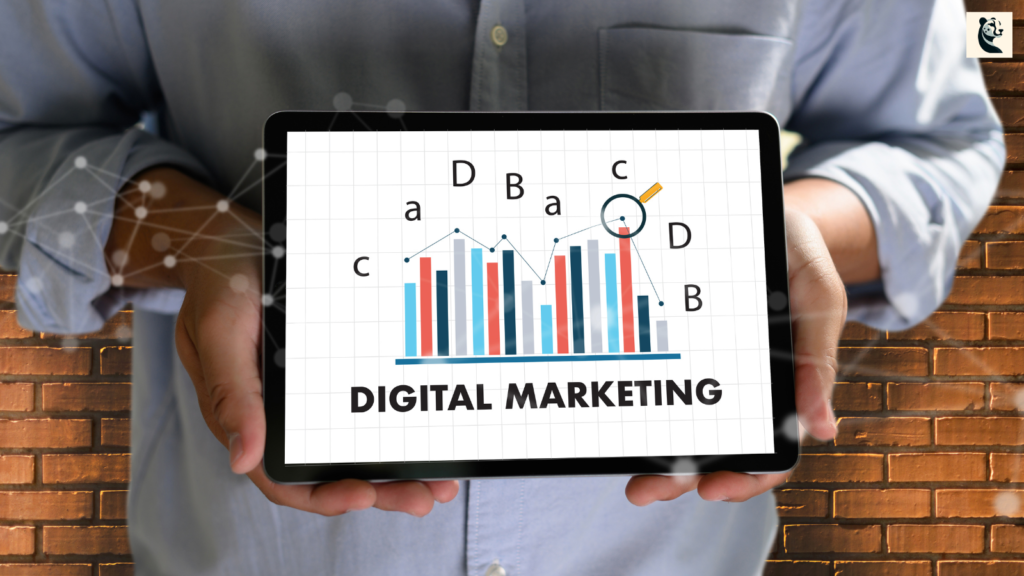
#7 Data Requirements for Effective AI Conversion Optimization
Types of Data Needed for AI Analysis
The success of AI-driven conversion optimisation hinges on the quality and comprehensiveness of the data it analyses.
To harness the full potential of AI, small businesses must gather and manage several key types of data:
- Customer Demographics: Information such as age, gender, location, and income level provides valuable context for understanding your audience. This data helps tailor marketing strategies to specific demographic groups.
- Purchase History: Detailed records of customer purchases, including products bought, frequency, and transaction value, are crucial for predicting future behaviour and identifying trends.
- Website Behavior: Data on how visitors interact with your website—pages visited, time spent on each page, clicks, and navigation paths—provides insights into user engagement and pain points.
- Social Media Interactions: Analyzing likes, shares, comments, and other interactions on social media platforms can reveal customer preferences and sentiments.
- Email Engagement: Metrics such as open rates, click-through rates, and conversion rates from email campaigns help gauge the effectiveness of your communication strategies.
Collection Methods
Collecting the right data efficiently and accurately is vital for AI conversion optimisation. Here are some effective methods:
- CRM Systems: Customer Relationship Management (CRM) systems like Salesforce, Zoho CRM, and HubSpot centralise customer data, making it easier to manage and analyse.
- Website Analytics Tools: Tools like Google Analytics, Hotjar, and Crazy Egg track and report website traffic, user behaviour, and conversion rates.
- Social Media Monitoring Tools: Platforms such as Hootsuite, Sprout Social, and Brandwatch monitor social media interactions and provide valuable insights into customer engagement.
- Surveys and Feedback Forms: Direct feedback from customers through surveys and forms can provide qualitative data that complements quantitative metrics.
Best Practices for Data Collection and Management
To ensure that your AI initiatives are built on a solid foundation, follow these best practices for data collection and management:
- Regular Data Audits: Periodically review your data to ensure it is accurate, complete, and up-to-date. This involves checking for duplicates, errors, and inconsistencies.
- Data Privacy Compliance: Adhere to data protection regulations such as GDPR and CCPA. Ensure customer data is collected and stored securely, and obtain explicit consent for data usage.
- Use Data Integration Tools: Integrate data from various sources to create a unified view of your customers. Tools like Zapier, MuleSoft, and Microsoft Power Automate can help streamline data integration processes.
- Data Quality Management: Implement processes to maintain data quality, including regular cleaning, validation, and standardisation. High-quality data leads to more accurate AI insights and better decision-making.
Ensuring Quality and Integrity of Data
The quality and integrity of your data directly impact the effectiveness of AI-driven conversion optimisation.
Here’s how to ensure your data meets the necessary standards:
- Reliable Sources: Collect data from trustworthy and reputable sources. Avoid using data that is outdated or from unreliable third parties.
- Regular Updates: Keep your data current by regularly updating it based on new customer interactions and transactions. Stale data can lead to inaccurate insights and poor decision-making.
- Validation and Cleaning: Continuously validate and clean your data to remove errors, duplicates, and irrelevant information. Use automated tools to streamline this process and maintain high data quality.
- Data Governance Policies: Establish and enforce data governance policies that define how data is collected, stored, accessed, and used. This ensures consistency and reliability across your data management processes.
#8 AI Chatbots: Boosting Customer Interaction and Conversion Rates
Role of AI Chatbots in Customer Engagement
AI chatbots have become essential for businesses looking to enhance customer interaction and drive conversions. By leveraging advanced natural language processing (NLP) and machine learning, chatbots can simulate human conversation, providing instant support and personalised experiences.
Here’s how AI chatbots can significantly boost customer engagement:
- 24/7 Availability: Unlike human agents, AI chatbots are available around the clock, ensuring that customers can get assistance whenever needed. This constant availability can lead to higher customer satisfaction and increased conversions, as potential sales are not lost due to delayed responses.
- Instant Responses: Chatbots can handle multiple inquiries simultaneously, providing instant responses to customer questions. This immediate interaction reduces wait times and keeps customers engaged, reducing the likelihood of abandonment.
- Personalised Interactions: AI chatbots can analyse customer data to deliver personalised responses and recommendations. For example, a chatbot can suggest products based on a customer’s browsing history or previous purchases, enhancing the shopping experience and increasing the chances of conversion.
Implementing Chatbots to Drive Conversions
Integrating AI chatbots into your business strategy can significantly improve conversion rates.
Here are some steps to effectively implement chatbots:
- Define Objectives: Clearly outline what you aim to achieve with your chatbot. Objectives include reducing customer service response times, increasing sales, or improving user engagement. Having clear goals will guide the chatbot’s design and functionality.
- Choose the Right Platform: Select a chatbot that fits your business needs and technical capabilities. Popular options include Chatfuel, ManyChat, and Drift. These platforms offer user-friendly interfaces and robust features that can be tailored to your specific requirements.
- Design Conversation Flows: Map out the typical conversations your chatbot will handle. This includes greetings, common questions, troubleshooting steps, and call-to-action prompts. Ensure the conversation flows are natural and intuitive to provide a seamless user experience.
- Integrate with Existing Systems: Ensure your chatbot can access and utilise existing customer data from your CRM, e-commerce platform, or other systems. This integration allows the chatbot to provide personalised responses and maintain consistency across all customer interactions.
- Monitor and Optimize: After launching your chatbot, continuously monitor its performance. Collect data on user interactions, response times, and conversion rates. Use this data to improve the chatbot’s functionality and effectiveness.
Best Practices for Maximizing Chatbot Effectiveness
To ensure your AI chatbot delivers optimal results, consider the following best practices:
- Human-Like Interactions: Design your chatbot to simulate natural, human-like conversations. Use NLP to understand and respond to user queries accurately. Incorporate friendly and engaging language to make interactions more enjoyable for users.
- Clear Call-to-Actions (CTAs): Include clear and compelling CTAs in your chatbot conversations. For example, guide users towards purchasing, signing up for a newsletter, or requesting more information. Effective CTAs can significantly boost conversion rates.
- Multi-Channel Support: Deploy your chatbot across multiple channels, including your website, social media platforms, and messaging apps. This ensures that customers can access support wherever they prefer to interact with your business.
- Continuous Improvement: Regularly update and refine your chatbot based on user feedback and performance data. Incorporate new features, improve response accuracy, and expand conversation capabilities to continuously enhance the user experience.
By implementing AI chatbots, small businesses can enhance customer interaction, provide instant support, and drive higher conversion rates.
In the next section, we’ll discuss the importance of monitoring and measuring AI impact on conversion optimisation to ensure continuous improvement and success.
#9 Monitoring and Measuring AI Impact on Conversion Optimization
Key Metrics to Track AI Performance
To effectively monitor and measure the impact of AI on conversion optimisation, it’s essential to track key performance metrics. These metrics provide insights into how well AI initiatives are performing and identify areas for improvement.
Here are the crucial metrics to focus on:
- Conversion Rate: The percentage of visitors who complete a desired action (e.g., purchasing or signing up for a newsletter). This is the primary metric for assessing the effectiveness of AI-driven conversion strategies.
- Customer Acquisition Cost (CAC): The total cost of acquiring a new customer, including marketing and sales expenses. AI can help reduce CAC by optimising marketing efforts and improving targeting.
- Customer Lifetime Value (CLV): The total revenue a business can expect from a single customer over the entire relationship duration. AI can enhance CLV by personalising experiences and increasing customer loyalty.
- Bounce Rate: The percentage of visitors who leave your website after viewing only one page. A lower bounce rate indicates better user engagement, often driven by AI-powered personalisation.
- Average Session Duration: The average time visitors spend on your website. Longer sessions typically indicate higher engagement, which can be enhanced through AI-driven content recommendations and user experiences.
Tools for Measuring AI-Driven Conversion Improvements
Several tools can help small businesses monitor and measure the impact of AI on conversion optimisation.
These tools offer advanced analytics and insights to track performance and make data-driven decisions:
- Google Analytics: A powerful tool for tracking website performance, user behaviour, and conversion rates. Google Analytics can integrate with AI tools to provide deeper insights into user interactions and campaign effectiveness.
- Kissmetrics tracks individual user behaviour and provides detailed insights into how users interact with your site. This helps you understand the impact of AI on specific segments of your audience.
- Mixpanel offers advanced analytics for tracking user interactions and conversion funnels. Its AI capabilities can help identify trends and optimize conversion paths.
- Tableau: A data visualisation tool that can integrate with various data sources to create comprehensive dashboards. Tableau’s AI features provide predictive insights and help visualise the impact of AI initiatives.
- SAS Analytics: Provides robust analytics and AI capabilities for in-depth data analysis and predictive modelling. SAS can help businesses measure the effectiveness of their AI strategies and optimise for better results.
Continuous Improvement Based on AI Insights
Monitoring and measuring AI’s impact on conversion optimisation is not a one-time task. It requires continuous effort to ensure sustained success.
Here are some best practices for leveraging AI insights for ongoing improvement:
- Regular Performance Reviews: Conduct regular reviews of your AI-driven conversion metrics. Analyse trends, identify patterns and determine areas where AI is making a significant impact. Use these insights to refine and optimise your strategies.
- A/B Testing: Continuously test different variations of your AI-driven campaigns and website elements. Use A/B testing to determine which changes lead to the most significant improvements in conversion rates. Implement the best-performing variations and iterate based on new data.
- Feedback Loops: Establish feedback loops to gather insights from customers and stakeholders. Use this feedback to identify pain points, improve user experiences, and enhance AI algorithms. Continuous feedback ensures that your AI initiatives remain relevant and effective.
- Scalability: As your business grows, ensure your AI tools and strategies can scale accordingly. Continuously monitor the performance of your AI systems and make necessary adjustments to handle increased data and traffic.
By effectively monitoring and measuring AI’s impact on conversion optimisation, small businesses can ensure continuous improvement and sustained success.
Conclusion
Harnessing the power of AI offers small businesses a transformative opportunity to enhance conversion rates and drive growth.
Throughout this article, we’ve explored various facets of AI implementation, from identifying key metrics and selecting the right tools to leveraging AI-driven personalisation and machine learning.
We’ve also discussed the benefits of automating A/B testing, overcoming integration challenges, using AI for customer segmentation, ensuring data quality, and deploying chatbots to boost customer interaction.
The key takeaways include:
- AI for Conversion Optimization: Understanding and utilising AI to track and improve conversion metrics is essential for driving growth.
- AI-Driven Personalization: Personalizing user experiences through AI can significantly enhance engagement and conversion rates.
- Machine Learning: Leveraging machine learning to predict customer behaviour can provide a competitive edge.
- Automating A/B Testing: AI can streamline A/B testing processes, delivering faster and more accurate results.
- Overcoming Challenges: Addressing common challenges in AI integration ensures smoother implementation and better results.
- Customer Segmentation: AI-powered segmentation enables more targeted and effective marketing strategies.
- Data Quality: High-quality data is the foundation of effective AI conversion optimisation.
- AI Chatbots: Implementing AI can enhance customer service and drive higher conversion rates.
- Monitoring and Measuring: Regularly tracking and analysing key metrics ensures continuous improvement and sustained success.
As AI technology evolves, it will open new avenues for small businesses to optimise their marketing strategies and stay ahead in a competitive landscape.
Embracing AI enhances conversion optimisation and positions businesses for long-term success.
Don’t miss the opportunity to harness AI and drive growth for your small business!
FAQs
Q1. What first steps should a small business take to implement AI for conversion optimisation?
A1: The first steps include identifying key conversion metrics, choosing the right AI tools, and setting clear objectives. Start by analysing your current performance, gathering data, and selecting AI solutions that align with your business needs. Tools like Google Analytics, Hotjar, and Optimizely are great starting points.
Q2. How can AI help identify and analyse key conversion metrics?
A2: AI tools can track and analyse metrics such as bounce, click-through, and conversion rates in real time. AI algorithms identify patterns and trends, providing deeper insights that help optimise marketing strategies and improve user experiences.
Q3. What AI tools are available for small businesses to improve conversion rates?
A3: Several AI tools are available, including Google Analytics for performance tracking, Hotjar for user behaviour analysis, Crazy Egg for heatmaps, Optimizely for A/B testing, and HubSpot for customer relationship management and marketing automation.
Q4. How can AI-driven personalisation enhance user experience and increase conversions?
A4: AI-driven personalisation tailors the user experience based on individual preferences and behaviours. Techniques include personalised product recommendations, dynamic content, and targeted marketing messages. These personalized interactions increase engagement, satisfaction, and conversion rates.
Q5. What role does machine learning play in predicting customer behaviour for better conversion optimisation?
A5 Machine learning analyses historical data to predict future customer behaviour, enabling businesses to tailor their marketing efforts effectively. This includes predictive analytics, dynamic pricing, and personalised recommendations, contributing to higher conversion rates.
Q6. How can AI automate A/B testing to find the most effective variations for conversion?
A6: AI automates A/B testing by setting up, executing, and analysing tests faster and more accurately. AI-driven multivariate testing can evaluate multiple variables simultaneously, providing a comprehensive understanding of how different elements impact performance.
Q7. What are the potential challenges small businesses might face when integrating AI for conversion optimisation?
A7: Common challenges include high initial costs, data quality issues, lack of expertise, and integration with existing systems. Solutions involve starting small, focusing on high-impact areas, leveraging external expertise, and using user-friendly AI tools.
Q8. How do AI chatbots improve customer interaction and conversion rates?
A8: AI chatbots provide 24/7 customer support, instant responses, and personalised interactions. They enhance user experience by quickly resolving queries, offering product recommendations, and guiding users through purchasing, leading to higher conversion rates.
Other Articles
How Small Business Can Integrate AI with Google Analytics
How Small Businesses Can Use AI in Content Creation
How Micro-conversions Help Small Businesses Refine Marketing Strategies

